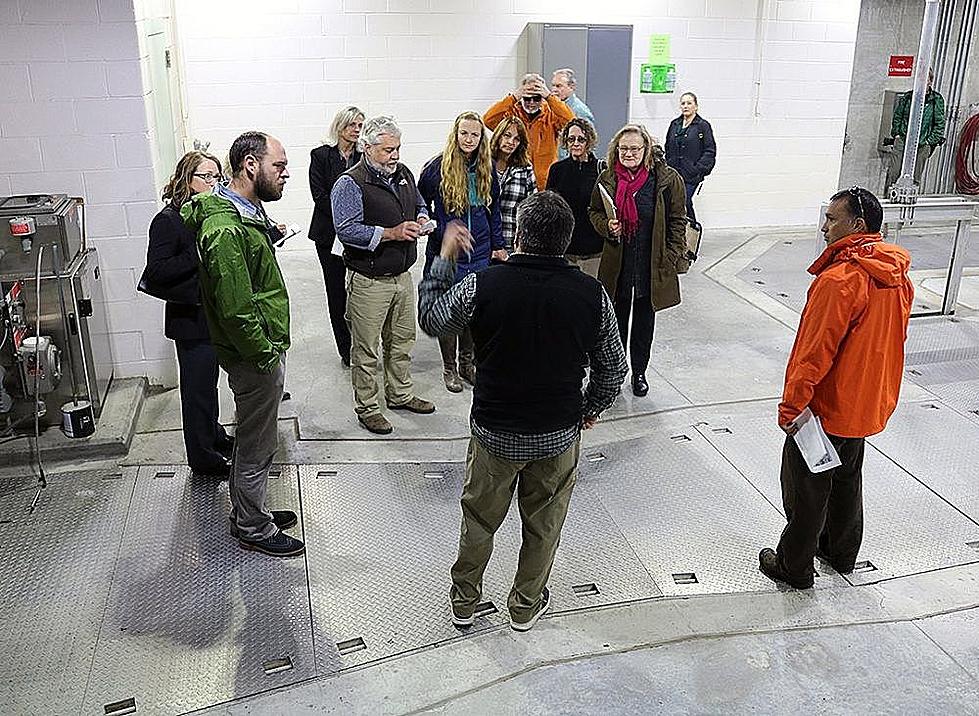
Missoula’s wastewater plant evolves to handle increased capacity
Cassidy Motahari
(Missoula Current) Hotdogs and burgers may be the meal of choice for University of Montana football fans. But with attendance at more than 25,000 for some home games, the crowds severely tested the city’s wastewater system until recent updates, according to city officials.
On average, wastewater flows to the university’s lift station peak at 100 gallons per minute. That number can rise to over 300 gallons per minute during football games, according to data from the city.
Missoula’s wastewater utility department realized that the pumps at the university’s lift station, which move wastewater from pipes deep in the ground to higher-elevation treatment sites, could not keep up with the deluge of sewage from the Washington-Grizzly Stadium. City workers also suspected that buildup in the stadium’s main sewer pipe was restricting the amount of wastewater that could flow through the system.
“The pumps weren’t pumping the amount of wastewater they should have been,” said Andy Schultz, an engineer for the city of Missoula. “We had people on call, monitoring the situation during games in case anything went wrong.”
In 2020, the city installed bigger pumps and increased the size of the main pipe connected to the lift station. Stadiumgoers can now freely exorcise the remains of their food and beverages without the imminent threat of a sewage malfunction.
While resolved, for now, the Washington-Grizzly Stadium’s poop predicament heralded a larger issue: Missoula’s aging wastewater system must undergo continuous improvements to keep up with the city’s rapidly growing population.
Missoula’s population rose to around 77,000 in 2022, up from about 67,000 in 2010, according to U.S. Census data.
It is an inevitable fact of human biology – where people go, poop follows. Missoula’s average residential wastewater flows are projected to increase by 70% by 2037 from 2017 levels, according to a report published by the city.
It can be challenging for small cities to improve wastewater infrastructure in the time needed to accommodate growing populations, according to Eric Bindler, senior research director at water utility firm Bluefield Research.
“If you’re dealing with rapid population growth, you need more pipes and more space in the system to accommodate flows. Typically, treatment plants are built with a certain design capacity,” said Bindler. “The solution, for the most part, is either build more treatment plants, build more of that infrastructure or upgrade and expand what you already have.”
As federal investment in water infrastructure declines, cities are bearing the cost of these necessary upgrades and expansions. Federal spending accounted for only 4% of investment in water utilities in the United States in 2017, according to the most recent Congressional Budget Office public spending report. State and local governments made up the remaining 96%. In contrast, federal spending accounted for 20% of water utilities investment at its peak in 1977.
In the past two decades, Missoula’s wastewater utility department has made multiple ambitious upgrades to the city’s wastewater infrastructure. A major upgrade in 2010 improved the headworks of the city’s main treatment plant and added a septage receiving station. A $17 million renovation completed in 2004 expanded the amount of wastewater the city can treat for nutrient removal from 9 million gallons a day to 12 million gallons a day.
While these larger projects are necessary to keep the city’s wastewater system functioning, Gene Connell, facility superintendent at Missoula’s wastewater utility department, stressed that the most important thing is constantly maintaining and making low-level enhancements to the existing infrastructure.
“You always find and focus on your weakest links,” Connell said.
The Missoula wastewater utility department plans to start work on replacing aging equipment to increase the amount of water they can remove from solid waste, some of which is then used to create compost.
Connell says the city is well-equipped to handle rising populations and increasing wastewater flow.
“The bottom line is, we have the capacity – now and into the future,” Connell said.
24 Closed Missoula Businesses We Wish We Could Bring Back
Gallery Credit: Mike Smith
More From Newstalk KGVO 1290 AM & 98.3 FM









